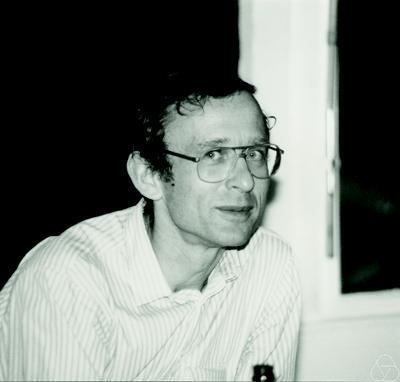Name Elart Collani | ||
 | ||
Books Binomial Distribution Handbook for Scientists and Engineers, The Economic Design of Control Charts | ||
Elart von Collani (born April 1, 1944, Lodz) is a German mathematician and stochastician who introduced a novel approach to science, which does not aim at explaining the universe, but at solving human problems. What are the characteristic features of future developments and how can they be described without making unrealistic assumptions? Von Collani's answer is that the future outcome of any development does not exist at the beginning, since many different outcomes are possible, and that therefore it cannot be predicted in principle. He concludes that the resulting uncertainty about the future outcome is the most striking feature of any real process and that this uncertainty leads to most of the problems humans are faced with. The variability of outcomes generates not only uncertainty but also the dynamics of the development of the universe. According to von Collani, any model of a real process, which does not include the omnipresent uncertainty, gives a wrong picture of reality and must almost necessarily lead to wrong decisions.
Contents
- Academic career
- Modelling uncertainty
- Bernoulli stochastics
- Scientific background
- Selected publications
- References
Academic career
Von Collani, is a graduate of the University of Würzburg. He has two doctor degrees (Dr.rer.nat and Dr.rer.nat.habil.) in Applied Mathematics and is since 2009 retired. He served from 1989 as Professor of Stochastics in the Faculty of Mathematics (until 1997) and thereafter in the Faculty of Economics of Würzburg University. He was guest docent at various universities in Japan, Sweden, Hungary, Germany and Brazil, and is Managing Editor of Economic Quality Control published by DeGruyter and head of the company STOCHASTIKON GmbH, which is specialized in developing software and problem solutions under uncertainty. Von Collani was coordinator of an international EC-project in the framework of COPERNIKUS (CP93-12074) and leader of a CEN (European Committee for Standardization) working group (WG1) for developing a standard for controlling Postal Services. Von Collani worked among others as a consultant of the German Regulatory Body, of E.ON Kernkraft, the DKFZ Heidelberg/Huntsman Cancer Institute of the University of Utah and TÜV-Nord. Moreover, he was appointed as expert to the High Court of Justice in London.
Modelling uncertainty
Von Collani's work is arranged around the concept of uncertainty about future developments. He identifies two reasons of uncertainty namely human ignorance with respect to the past and universal randomness with respect to the future. According to von Collani, randomness is a characteristic property of any real process and becomes manifest by the fact that any repetition of a process yields a different result. Thus, modeling randomness means to model this variability taking into account the limited knowledge (ignorance) about the initial conditions. In commemoration of Jakob Bernoulli, von Collani named the mathematical model of uncertainty describing the transition from past to future as Bernoulli Space. Based on the Bernoulli Space von Collani developed reliable and accurate stochastic prediction and measurement procedures as basis for appropriate decisions. In contrast to traditional scientific models, the Bernoulli Space gets by without any assumption or principle. This is achieved by abandoning the explanatory power in favor of descriptive accuracy of the model. As shown by von Collani, the Bernoulli Space is not only a rational alternative to statistical models, but also an alternative to scientific models where the latter are build on the two questionable principles of determinism and reductionism. Actually, von Collami shows that the Bernoulli Space covers statistical models as well as scientific models, where these models appear in the framework of the Bernoulli Space as rather unrealistic bounding elements and should therefore be used only in special situations.
Bernoulli stochastics
Based on the Bernoulli Space, von Collani develops a new approach to science which he calls Bernoulli Stochastics because it follows Jakob Bernoulli's insight that an explanation of creation (universe) is impossible and should therefore not be attempted. According to von Collani, the main differences between Bernoulli Stochastics and traditional science are the following: • Traditional science is an attempt to explain the whole by looking at its parts (reductionism) while Bernoulli Stochastics is a holistic approach aiming at deriving reliable and precise stochastic prediction procedures. • Traditional science is essentially based on determinism and causality aiming at discovering truths, while Bernoulli Stochastics admits the existence of randomness and the impossibility of detecting truths. • Traditional science rests on theories being the result of a flash of genius, while Bernoulli Stochastic represents the outcome of a regular appraisal of experience and observation.
Scientific background
Von Collani takes up the concept of probability, i.e. the quantification of randomness, as proposed by Jakob Bernoulli in the end of the 17th century in his master piece Ars conjectandi. According to von Collani, Bernoulli aimed at initiating a new revolutionary way of thinking by extending the concept of randomness from the fields of game of chance as proposed in the famous correspondence between Pascal and Fermat to science and the everyday life of human beings. Jakob Bernoulli died in 1705 before he could complete his plan. As a consequence the Ars conjectandi was published only eight years after his death; too late to determine the further development of science,. Von Collani's work continuous and extends the ideas of Jakob Bernoulli by introducing stochastic thinking instead of the popular causal thinking
Selected publications
IAPQR Transactions, Special Volume 01, 197–216, 2013.
